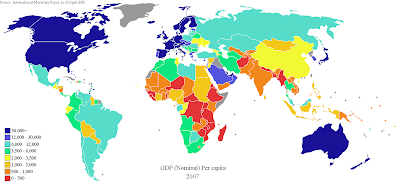Have you considered setting any goals--or making any special resolutions--for 2009? I'd like to share one of my favorite books with you. Perhaps it will stimulate some thought.
The Four Agreements is a book written by Don Miguel Ángel Ruiz. He went to medical school and was a surgeon until a near-death experience impelled him to seek answers in ancestral traditions of the Toltec.

His most famous and influential work was published in 1997 and has sold around 4 million copies. It was featured on the Oprah television show. It advocates personal freedom from agreements and beliefs that we have made with ourselves and others that are creating limitation and unhappiness in our lives. Ultimately, it is about finding one's own integrity, self-love and peace within this reality.
One Agreement is to "do your best." This is one of my favorite of the Four Agreements--and it is one that recurs in my goal-setting every day.

Abraham Lincoln put it this way, "I do the very best I know how - the very best I can; and I mean to keep on doing so until the end."
A few years ago I asked a few of my top clients for feedback regarding my financial service. One of the attributes they often cited was integrity. I am pleased they noticed--as this is one of my core principles.

The idealist in me wishes more people would value this principle. It seems we have examples of this each & every day...from diverse sources, such as:
* People who shoplift at the store where my wife works part-time. Yes, sometimes people "speak" by their actions and not their words.
* Bloggers who write viciously on well-known Internet web sites
* Those who take narrow-minded swipes at elected officials, therefore castigating them for offering no redeeming value to society
There was someone who lived a couple thousand years ago who had an interesting reply to all of this:
Let him among you who is without sin be the first to cast a stone. I recently watched Easy Rider. As the boys explore the USA on their bikes, Captain America (played by Peter Fonda) and Billy (played by Dennis Hopper) find themselves in the Deep South--trying in vain to get service in a local cafe.

They are baited by the local good old boys, including the town sheriff--but they will not be provoked. (In a modern movie you are likely to see a big fight scene ensue.)
Our heroes take it in for a while--and when they realize the waitress is "instructed" not to give them service, they calmly put on their hats and walk outside to their bikes.
That's one way of "not taking things personally."

As you see, the problem was not with them--not they way they dressed--not Billy's long, scraggly hair.
The problem illustrated in this scene was the blind prejudice of the red-neck trouble raisers. As Mr. Ruiz wrote, what others say & do is a projection of their own reality.
Keep that in mind the next time you receive a snide remark--any you'll be a whole lot happier--and maybe even reflect on this quote from Alexander Pope, "To err is human, to forgive is divine."
I find that it is very easy to "know" what someone else is thinking. Many of us make assumptions all the time. Yet, are they correct? We really don't know why someone is responding the way they are--at least not without asking them & probing their rationale and emotions in depth.

We have begun a successful endowment program at our church. During a committee meeting that I lead, we were discussing who was coming to our May dinner seminars.
Pastor Paul expressed disappointment that one particular family had declined our invitation. I asked him if he was familiar with
The Four Agreements and specifically mentioned this Agreement, "don't make assumptions."
We had a nice discussion about it. My point was that just because that family declined our gracious invitation, it wasn't necessarily a negative thing. Indeed, they may have it in their heart to do something else favorable to the Lord's work.
When the dinner seminar came around, I noticed a different family who came--and yet they did not choose to meet later with our charitable giving counselor. I know the reason--their parents were from a church in Green Bay--and so they had already decided to include a charitable gift in their estate plans for that church. Perfectly reasonable once one knows their rationale.
And that is the bottom line of this important Agreement. Don't make assumptions. Be careful, because you rarely have all the facts. Without the facts, it is easy to mis-judge the situation and the motives of others.



















